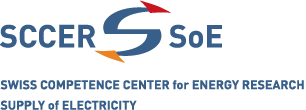As most of the potential for large hydropower reservoirs is already exploited, future development focusses on small run-of-the-river hydropower plants (SHP). Being considered a relatively environment-friendly electricity source, investment in SHP is promoted through subsidies. However, SHP can have a significant impact on riverine ecosystems, especially in the Alpine region where residual flow reaches tend to be long. An increase in hydropower exploitation will therefore increase pressure on ecosystems. While it is inevitable that some ecosystems are compromised by hydropower plants, the context of these impacts within a river network should be considered when selecting suitable sites for SHP. From an ecological point of view, the diversity of habitats, and therefore the diversity of species, should be maintained within a river basin. Within this project, trade-offs between multiple objectives regarding environmental impacts, electricity production and economic valuation are established using a multi-objective evolutionary algorithm. Objectives that go beyond lumped parameters of hydrological alteration, but also consider habitat diversity and the spatial configuration will be developed. Trade-off curves between different objectives can help decision makers to define policies for licensing new SHP and for defining minimum flow requirements. |
